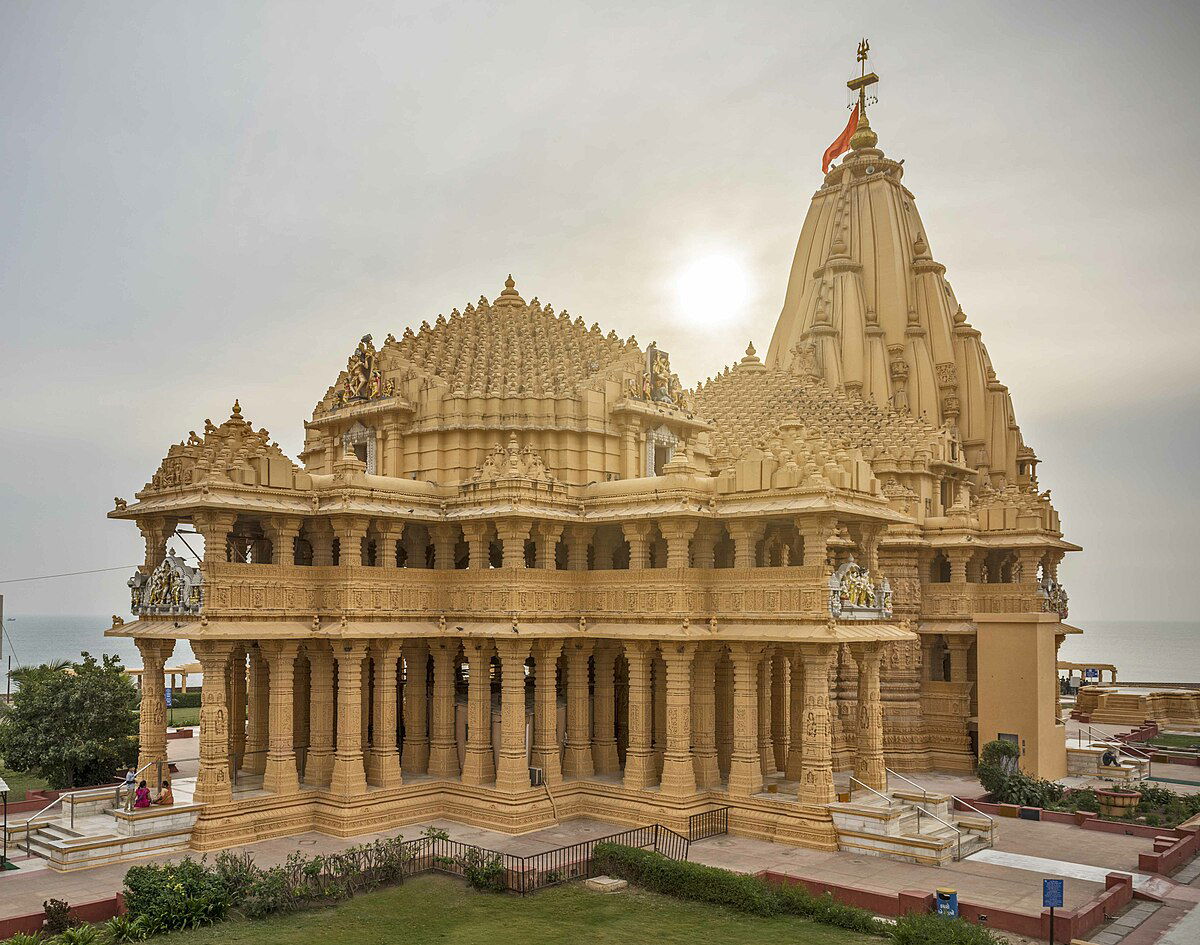Why Somnath Jyotirling Temple Is Known as “Shrine Eternal”

India’s spiritual geography is like a living map of devotion, with countless temples woven into its cultural fabric. Some are celebrated for their architecture, others for their historical legacy, and a few for their mystical presence. Among these sacred spaces, one stands apart for its resilience and timeless significance. The Somnath Jyotirling Temple is often called the “Shrine Eternal” because it symbolizes the undying spirit of faith, surviving cycles of destruction and rebirth while continuing to inspire millions of pilgrims today.
A Legacy That Refuses to Fade
The story of Somnath is not just about stone and sanctum; it is about perseverance. Over centuries, the temple faced invasions and demolitions multiple times, yet it always rose again. Each reconstruction was more than a building effort—it was a reaffirmation of belief. Devotees did not let fear erase their connection to this sacred site. Instead, they rebuilt it as a declaration that faith is stronger than power or politics. This repeated revival is why the temple earned its title as “Shrine Eternal.” It teaches us that spirituality can never truly be destroyed, even if its symbols are temporarily challenged.
Why Somnath Holds Global Appeal
Pilgrims from across India and abroad visit Somnath not just to perform rituals but to witness this living metaphor of endurance. Standing on the shores of Gujarat, with the Arabian Sea waves crashing at its base, the temple feels like a sentinel guarding centuries of devotion. Many visitors describe how the sound of the ocean mixing with temple bells creates a rhythm that touches the soul. It is this atmosphere of serenity coupled with history that makes the temple a magnet for seekers of inner peace, historians, and travelers alike.
A Comparative Lens of Devotion
When one studies Indian temples, it becomes clear that each region offers a unique style of spiritual expression. For example, the Vardharaja Perumal Temple Kanchipuram in Tamil Nadu showcases intricate Dravidian architecture and rituals rooted in Vaishnavite tradition. While Somnath emphasizes the resilience of Shaivism, Vardharaja highlights the grandeur of Vishnu worship. Together, they demonstrate how diverse yet interconnected the religious landscape of India is, with each temple reinforcing a different facet of devotion.
More Than a Pilgrimage, a Journey of Reflection
Visiting Somnath is not just about darshan; it is also about introspection. Many devotees recall how the temple makes them reflect on their own lives—how setbacks can be rebuilt into opportunities, just as the shrine was restored countless times. The structure itself becomes a teacher, reminding visitors that resilience is not about avoiding difficulty but about rising after every fall. Organizations like Naman Darshan have made it easier for devotees, especially those with time or mobility constraints, to access information, plan trips, and feel connected to these spiritual experiences even before setting foot inside the temple.
Symbolism Through Architecture
Somnath’s design is also layered with meaning. The temple faces directly westward, allowing the setting sun to illuminate the sanctum, symbolizing how divine presence outshines the darkness of endings. Carvings along the temple walls narrate mythological tales, not merely as decoration but as teaching tools for future generations. Every stone in the structure represents a silent witness to centuries of human history—be it the hand of a devotee, the blow of an invader, or the chisel of a craftsman.
Eternal Faith Beyond Geography
Interestingly, Somnath’s influence extends far beyond Gujarat. Diaspora communities across the globe celebrate its significance through cultural festivals and virtual darshan. For many, the temple is less about a physical location and more about a state of mind—a constant reminder that faith, once rooted, can withstand even the harshest storms. This is why devotees often say that visiting Somnath is like recharging the soul’s batteries, allowing them to return to their daily lives with renewed strength.
Spiritual Parallels Across India
The endurance of Somnath finds echoes in other parts of India as well. The Belur Math Temple, for instance, represents a harmonious blending of different spiritual traditions, where the teachings of Ramakrishna Paramhansa and Swami Vivekananda guide seekers. While Belur Math emphasizes harmony among religions, Somnath embodies resilience in the face of adversity. Both stand as reminders that India’s spiritual fabric is strengthened by diversity and perseverance rather than weakened by challenges.
Conclusion: The Everlasting Message of Somnath
The phrase “Shrine Eternal” is not just an honorary title—it is a lived truth for Somnath. Its history tells us that while structures may fall, the essence of devotion cannot be erased. Its presence on the seashore reminds humanity that faith, like the ocean, is vast and enduring. Comparisons with temples across the country, from Kanchipuram to Belur, reveal how each shrine carries its own message but contributes to a shared spiritual narrative. With initiatives like Naman Darshan making access to these sacred experiences easier, Somnath continues to inspire not only pilgrims but also anyone who seeks strength in resilience.The Somnath Jyotirling Temple will forever be more than stone—it will remain a living testament that devotion, when rooted deeply, truly becomes eternal.
